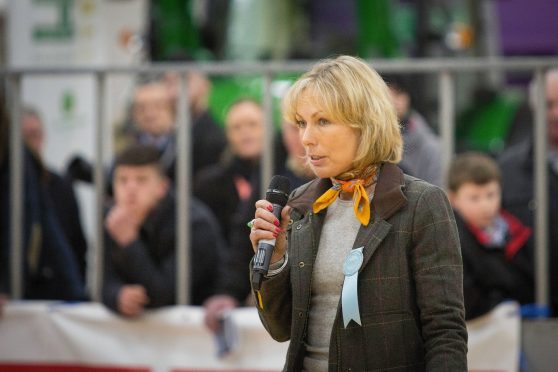A leading Scots butcher has called on farmers and crofters to start finishing cattle at lower weights.
Louise Forsyth, of W. T. S. Forsyth and Sons Butchers in Peebles, made the plea while judging prime cattle at the Aberdeen Christmas Classic event last month.
Mrs Forsyth is a regular prime cattle buyer sourcing beasts every week from St Boswells mart for the family butchers business.
Following her judging stint at Thainstone, alongside Jim Smith of Wester Campfield, Glassel, Mrs Forsyth said it had been difficult to assess animals as many of them had been “big and very heavy”.
She said: “I can only buy what I can sell to customers. All bigger animals – anything over 620kg liveweight – are getting more and more difficult to deal with.
“Farmers should ask to see the carcases. Customers cannot buy big steaks from them [bigger cattle].”
The Scottish Association of Meat Wholesalers (SAMW) said producers must focus on getting cattle as “in spec” as can possibly be achieved.
The organisation’s executive manager, Ian Anderson, said: “That means, we want cattle which are ideally between 320 and 380kg carcase weight, while also meeting the required fat and age criteria. Many farmers hit that spec window all the time, of course, which is good for their business and for ours. Producers who don’t do that, however, are wasting their resources and adding cost to all our businesses.”
NFU Scotland livestock committee chairman, Charlie Adam, said meat processors and butchers needed to be more consistent with their specification criteria and give more notice of changes to their requirements.
“In the past there has been a degree of inconsistency from processors. When cattle have got short [in supply] they have taken the heavier cattle, “said Mr Adam, who farms at Braeside, Cushnie, Alford.
He said farmers needed paid a fair price for what the market required and producers choosing to finish cattle at heavier weights must only do so if they have access to a market for the heavier cattle.
Quality Meat Scotland’s senior economics analyst, Iain Macdonald, said monthly slaughter statistics from the Scottish Government revealed that from June this year carcase weights had declined in comparison with 2015.
He said: “It is important to recognise that beef cattle farming involves a long production process and changes made in response to market demand can take time to come through. This fall in carcase weights, however, is a strong indication that Scottish producers have responded to clear market signals.”
